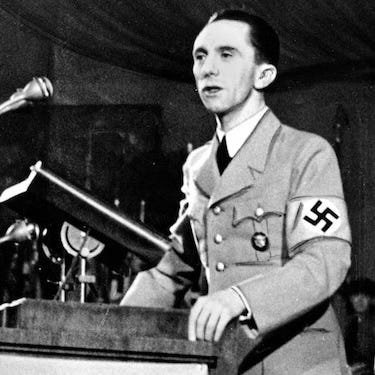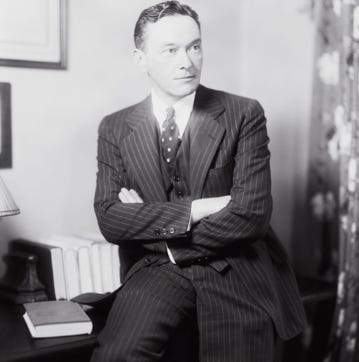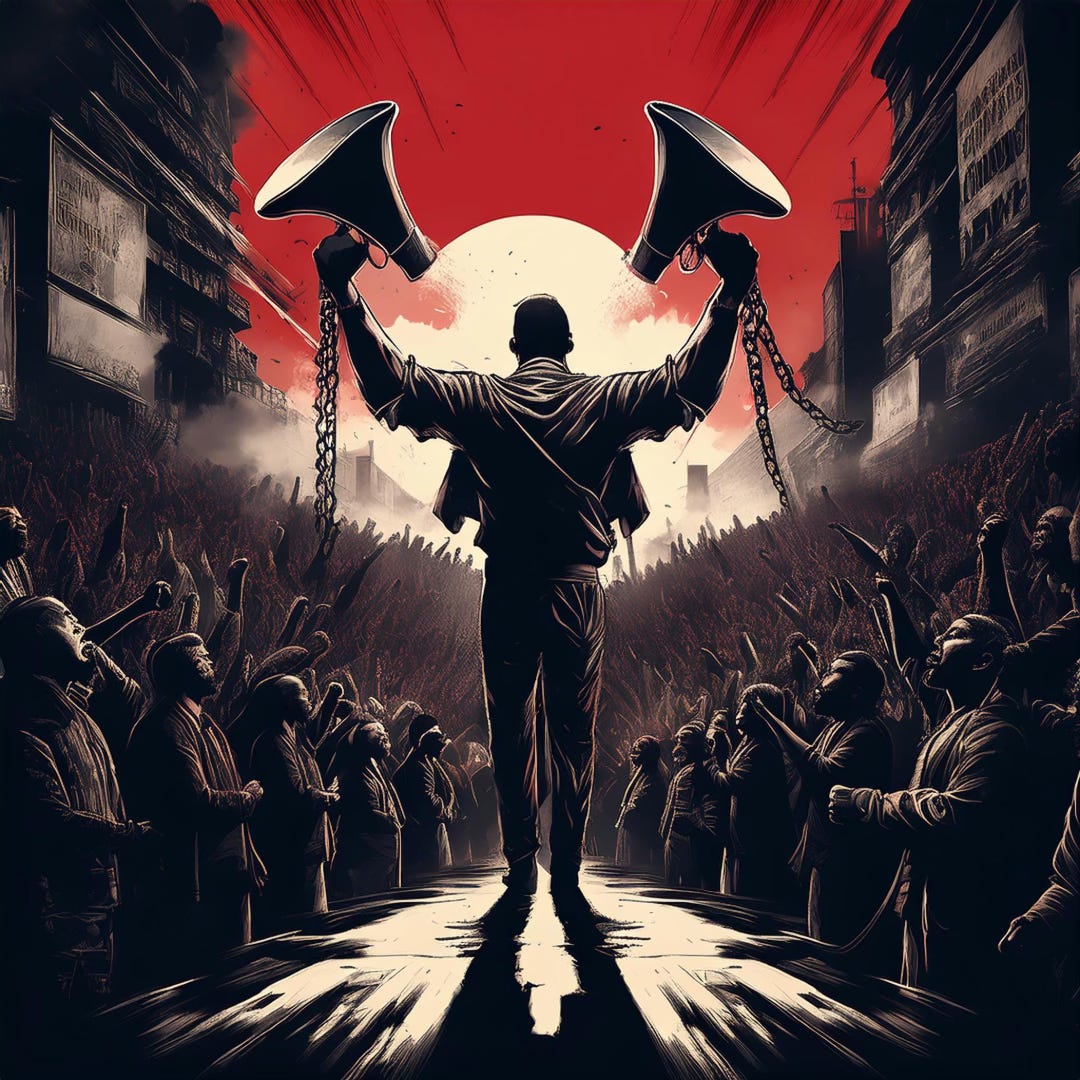Kamala's DOJ publicizing Ryan Wesley Routh putting a bounty former president and current presidential candidate Donald Trump is an example of open communications.
Open communication operations have been used in various forms of political warfare throughout history, often as a means of influencing public opinion, manipulating information, and achieving political objectives. Here are some key examples:
Cold War Propaganda (1947-1991):
Both the United States and the Soviet Union used open communication, such as media broadcasts, films, and literature, to wage ideological battles. The U.S. relied on outlets like *Voice of America* (Tuckers father was a part of VOA) and *Radio Free Europe* to promote Western democratic values in Eastern Europe and the USSR. Meanwhile, the Soviet Union used its state-controlled media to promote communism and criticize Western capitalism. Both sides sought to win over international and domestic audiences through open communication.
See section below on Congress for Cultural Freedom:
Nazi Propaganda (1930s-1945):
Adolf Hitler and Joseph Goebbels used open communication channels like radio, film, newspapers, and rallies to spread Nazi ideology and manipulate public opinion. The goal was to unite Germany under Nazi rule and justify aggressive military expansion, as well as genocide against Jews and other minorities.
The Arab Spring (2010-2012):
Social media platforms like Facebook, Twitter, and YouTube were used by activists to communicate openly, organize protests, and share news about uprisings in Tunisia, Egypt, and other countries. Governments in these nations also attempted to use media and communication to sway public opinion or suppress dissent. These platforms played a crucial role in amplifying political messages and fostering movements, though some governments responded with disinformation campaigns.
Chinese Influence Campaigns:
In recent years, China has been accused of using open communication through state-run media, social media, and diplomatic messaging to shape global narratives. This includes promoting its political system while undermining democratic ideals abroad. China has used platforms like Twitter (despite being banned within China) to spread favorable messages and counter negative narratives about issues like Hong Kong or Xinjiang.
Russian Disinformation (2010s-present):
Russia's open communication strategy has involved spreading disinformation through social media, state-run outlets like RT (Russia Today- who’s largely funded by Qatar, a hotbed for intelligence convergence of multiple countries) and hacker groups to influence foreign elections and sow discord in other countries. A notable example is the alleged Russian interference in the 2016 U.S. elections, where social media platforms were used to spread misinformation and deepen political divides within the U.S.
We can see how these examples delineate ways open communication have been used to shape narratives, influence public opinion, and achieve political goals across different historical contexts and conflicts.
It’s a key tool for unrestricted warfare.
And the leaked documents on Trump assassin are a great recent example!
THE BRITISH WAR PROPAGANDA BUREAU & OPEN COMMUNICATIONS LEADING TO THE “GREAT WAR” aka WW1
Tavistock’s predecessor the Wellington House aka the British War Propaganda Bureau, established during World War I FKA the Great War, extensively used open communications as part of its broader propaganda efforts. The Wellington House was tasked with shaping both domestic and international opinion in favor of Britain’s war efforts. Some of their utilization of open communication included:
Media and Publications
The Bureau engaged with the press and publishing industries to disseminate pro-war messages. It commissioned and distributed articles, pamphlets, and books by 25 influential writers and intellectuals, including H.G. Wells, Arthur Conan Doyle, and Rudyard Kipling and kept this mission secret until 1935. These materials were designed to justify Britain's involvement in the war, highlight German atrocities, and rally public support. The Bureau was created as a counter measure to the German Propaganda Bureau aka the German Information Bureau which became instrumental later in the rise of Nazi Germany. (Willie Munzenberg who was a chief propagandist for the Comintern was a leading figure in the rival German propaganda organization.) They were openly published and widely distributed to influence public opinion both in the UK and abroad.
Films and Visual Media
The Bureau also supported the production of films and visual propaganda to reach a broader audience. They appointed George Creel to create the Creel commission of which was helmed by Edward Bernays & Walter Lipman who were tasked with creating and advising Woodrow Wilson on many propagandistic measures. (For more info on the creel commission see post 👇🏻) The documentary “The Battle of the Somme” (1916) was one of the first films to depict real wartime footage and was shown in cinemas across Britain. It helped convey the bravery of British soldiers and the necessity of the war, reaching millions of viewers and shaping their perceptions of the conflict.
Speeches and Public Addresses
Open communication through public addresses and speeches was an integral tool. Political leaders and military officials were encouraged to give speeches promoting the war effort, which were often reported in newspapers and broadcasted through other media channels. This helped maintain morale and national unity.
International Propaganda
The British War Propaganda Bureau also aimed its efforts at international audiences, particularly in “neutral countries” like the United States. Open communications such as news stories, books, and editorials were used to influence American public opinion and ensure eventual U.S. support for the Allied cause. The Bureau collaborated with American journalists and publishers to spread pro-British messages.
Coordination with Media Outlets
The Bureau worked closely with major newspapers such as the Daily Mail, The Times, the New York Times, the Daily Telegraph, The Manchester Guardian, ensuring that war reports and articles were written in a way that aligned with government objectives. While some information was censored for security reasons, much of the communication was designed to be public, reaching as many people as possible to create a favorable narrative.
The success of these Open communication strategic efforts to control the war narratives, helped solidify public backing for the war and contributed to Britain’s ability to sustain its war efforts. It’s questionable whether the United States would have entered the war without the propaganda efforts.
THE CREEL COMMISSION:
The Creel Commission, AKA as the Committee on Public Information (CPI), was a U.S. government agency created during World War I under President Woodrow Wilson in 1917. Led by journalist George Creel, its purpose was to influence public opinion and gain support for the U.S. war effort, both domestically and abroad.
Edward Bernays & Walter Lipman at the behest of Tavistock’s proto organization the Wellington house were leading figures in the Creel Commission tasked with creating propaganda that would garner acquiescence from the American people for engagement and financial support of the Great War later called WW1. (This included messaging surrounding the Fed reserve act, the tariff act & the income tax act).
Bernays, the double nephew of Sigmund Freud, often referred to as the "father of public relations," played a pivotal role in applying psychological and communication strategies to influence public opinion. His main contributions were:
Development of Propaganda Techniques:
Bernays used insights from psychology and crowd behavior (based largely of Le Bon’s work the Crowd - 1895) to craft messages that would resonate with the masses, essentially laying the groundwork for modern public relations. He understood that emotions and symbols were powerful tools to shape public opinion and utilized them to build support for U.S. involvement in the war.
Promoting War Aims Internationally:
Bernays helped the Creel Commission spread pro-war propaganda abroad, particularly in Europe and Latin America, using materials that showcased the U.S. as fighting for democracy and freedom. This was done to win over global opinion and counteract German propaganda.
After the war, Bernays continued to develop these techniques and applied them to commercial advertising and political campaigns, becoming a key figure in the rise of public relations.
-Walter Lippmann:
Walter Lippmann, a prominent journalist and intellectual, was another key figure in the Creel Commission. His contributions included:
Shaping Public Perception:
Lippmann was deeply concerned with how public opinion could be manipulated. His work with the Creel Commission involved creating narratives that would resonate with the American public and ensuring that the media played a supportive role in the war effort.
Censorship and Information Control: Lippmann helped develop strategies for controlling the flow of information to the public, ensuring that pro-war sentiment was maintained while dissenting voices were minimized. He later became critical of the ways propaganda could distort public opinion, a theme he explored in his influential book “Public Opinion” (1922).
Their work helped set the stage for the use of propaganda in modern political and commercial communications.
-Some Key Activities of the Creel Commission:
Propaganda through Media:
The CPI controlled the narrative by distributing pro-war materials through newspapers, magazines, pamphlets, and other forms of media. Creel and his team worked with the press to ensure that information about the war was framed positively and aligned with U.S. government objectives. They produced stories that highlighted American patriotism and the righteousness of the Allied cause while demonizing Germany.
Four-Minute Men:
One of the CPI’s most innovative strategies was the creation of the “Four-Minute Men”, a group of 75,000 volunteers who gave short, impassioned speeches supporting the war at public gatherings, like theaters and churches. These speakers would explain the war effort, encourage the purchase of war bonds, and promote enlistment in the military.
Film and Visual Arts:
The CPI used films, posters, and cartoons to visually communicate messages that would rally support for the war. Films such as “The Kaiser, the Beast of Berlin” were used to portray Germany as the enemy, while posters depicting heroic American soldiers encouraged enlistment and financial contributions through war bonds.
International Propaganda:
The CPI was also active internationally, distributing American war propaganda to neutral and Allied nations. It worked to improve the image of the United States and convince neutral countries to support the Allies. This included sending pro-American materials abroad and coordinating with American diplomats to manage global perceptions.
Censorship and Control of Information:
The CPI played a role in censorship, limiting what the public could learn about the war, especially regarding defeats or negative aspects of the U.S. effort. They controlled the flow of information to maintain morale and prevent dissent.
The Creel Commission and the British War Propaganda Bureau aimed to amass public support for their respective war efforts by shaping opinion through media, films, and publications. The U.S. entered the war later than Britain, and once it did, the British Propaganda Bureau helped guide the newly-formed Creel Commission in shaping its propaganda efforts. Britain had developed significant expertise in using propaganda, and they shared some of these techniques with the U.S.
Before the U.S. joined the war, the British War Propaganda Bureau had already been targeting American audiences to sway public opinion towards supporting the Allies. British propagandists spread stories of German atrocities, including the exaggerated “Bryce Report”, to paint Germany as barbaric. After the U.S. joined the war, the Creel Commission and Wellington House shared information and coordinated messaging to ensure a unified Allied narrative.
The British Propaganda Bureau influenced the methods the Creel Commission would later use. For example, both agencies used prominent writers, intellectuals, and artists to create patriotic content. The British had already enlisted authors like H.G. Wells and Arthur Conan Doyle, and the Creel Commission followed suit by using figures like George M. Cohan and Hollywood filmmakers to produce pro-war content.
As the war progressed, the British and American propaganda efforts became more coordinated, especially in targeting neutral countries and the home fronts of both nations. This was crucial for maintaining public morale and encouraging financial contributions, such as war bonds. Both organizations worked to ensure consistent messaging, portraying the Allies as morally justified and the Central Powers as aggressors.
COLD WAR PROPAGANDA-
Since I mentioned Cold War propaganda as an example of Open Communications, perhaps it would be a good time to discuss the CCF Congress for Cultural Freedom for those who might not be familiar:
The Congress for Cultural Freedom (CCF) was deeply involved in shaping intellectual and cultural discourse during the Cold War through -open communications operations. These operations were designed to promote Western democratic values and counter the influence of Soviet communism, using media, conferences, and cultural initiatives to influence public opinion. The CCF operated under the auspices of independence, however its activities were secretly funded and directed by the CIA.
Some Publications and Media Outlets that the CCF supported were influential in intellectual circles. These included:
- *Encounter* (UK)
- *Preuves* (France)
- *Der Monat* (Germany)
- *Tempo Presente* (Italy)
These publications featured essays and articles that championed liberal democracy, freedom of expression, and anti-communist views. While they appeared independent, they were funded and editorially influenced by the CIA via the CCF. Writers were often unaware of the CIA’s involvement, but the content consistently promoted values aligned with U.S. interests.
-International Conferences and Seminars:
The CCF organized intellectual conferences across Europe, Asia, and Latin America, inviting prominent intellectuals, writers, artists, and philosophers. These gatherings were intended to promote Western ideals of freedom and democracy while opposing totalitarianism. The CCF often brought together influential figures, many of whom were unaware of the CIA's backing, to shape intellectual debates.
Cultural Programming:
The CCF also sponsored cultural events, such as art exhibitions, concerts, and theater productions, to showcase Western artistic achievements and to counter Soviet cultural propaganda. This was part of the larger strategy to position Western culture as synonymous with freedom, creativity, and individual expression, in contrast to the censorship and repression associated with Soviet communism.
-Influencing Public Opinion in Neutral and Non-Western Countries:
The CCF's operations were global in scope. Beyond Europe, it targeted countries in the developing world and neutral states, where Cold War ideological competition was fierce. Through funding local cultural programs and publications, the CCF sought to win over intellectuals and thought leaders in places like Latin America, Asia, and Africa. These efforts were part of the broader U.S. strategy of "soft power" to influence global opinion during the Cold War.
Prominent Intellectuals Involved:
Some of the most well-known intellectuals of the time were involved in the CCF, including-
Isaiah Berlin, Arthur Koestler (a propagandist who’ve I’ve previously mentioned was commissioned by Willi Munzenberg), Bertrand Russell (honorary president of the CCF who left in 1956), Ignazio Silone, George Orwell. Artists Jackson Pollack, Willem de Kooning, Robert Motherwell, and Franz Kline were part of the abstract expressionism movement.
The CCF's operations contributed significantly to shaping the intellectual landscape of the post-war world. Its open communications strategy was successful in promoting a narrative of Western democratic superiority while discrediting Soviet-style communism. However, when the CIA's covert funding of the CCF was exposed in 1966, it caused a significant scandal, leading to public disillusionment and questioning of U.S. propaganda methods. The exposure raised broader ethical concerns about government manipulation of culture and intellectual life.
The CCF’s open communications operations were a sophisticated effort to project soft power and sway public opinion, part of a broader Cold War strategy that mixed culture, politics, and ideology.
Knowing how these various propaganda arms work might provide some insights to the machinations of the oligarch today!






















Added to my Mindwar graph:
https://embed.kumu.io/ce36c644a9f28f2bbbfc5f3c882d2685